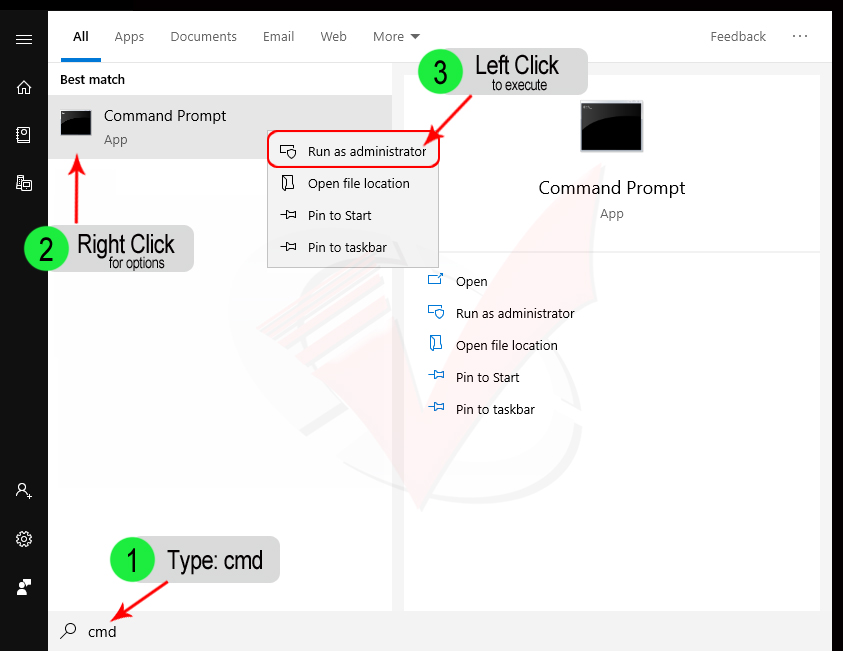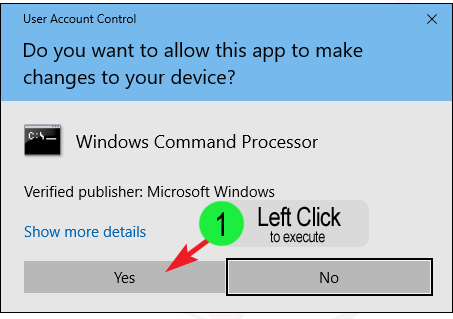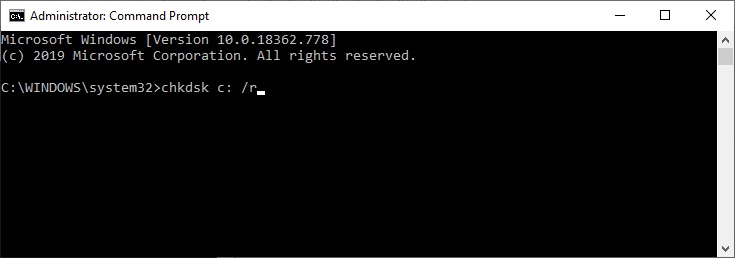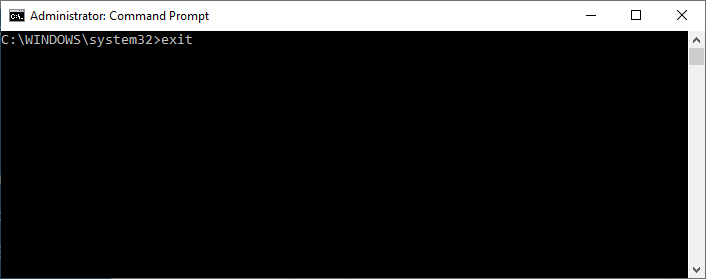- Click on your Windows icon (Start button)

- Type 'cmd'
- Right click on cmd (app) to show options menu
- Left click on 'run as administrator' to execute options

- Left click on 'yes' to allow 'Windows Command Processor' to make changes to your device
This will start the command prompt terminal window

- Type 'C:\WINDOWS\system32>chkdsk c: /r'
- Press enter
- The above command will find and fix (if possible) bad sectors, lost clusters, cross-linked files, directory errors.
- When you run this command, the drive must not be mounted (in use).
Chkdsk will detect the drive is in use and will ask to dismount (if the drive in question is your Windows drive it will ask to restart)
The utility will restart your system and check the filesystem on next boot. Simply answer 'y' to any questions.

- If the drive chosen is not the Windows drive and the chkdsk has completed.
- Type 'exit'
- Press enter
- This will exit the command prompt terminal

Still having issues:
You might need to book a Navada Service
The issue could be hardware related.
Other options:
chkdsk D: /f /r /xThe Drive letter chosen is D:
The parameters for this command are:
/f option will attempt to fix any found errors
/r option will locate for bad sectors and recovery any readable information
/x option will force the volume you’re about to check to be dismounted before the utility begins a scan, once again if the C: drive is in use,
type Y to run a scan at your PC’s next restart. If so, exit Command Prompt and restart the computer.
If no errors were found, you’ll see this message:
Your drive was successfully scanned Windows successfully scanned the drive. No errors were found.
If errors were found, you’ll see this message instead:
Restart your computer to repair file system. You can restart right away or schedule the error fixing on next restart.